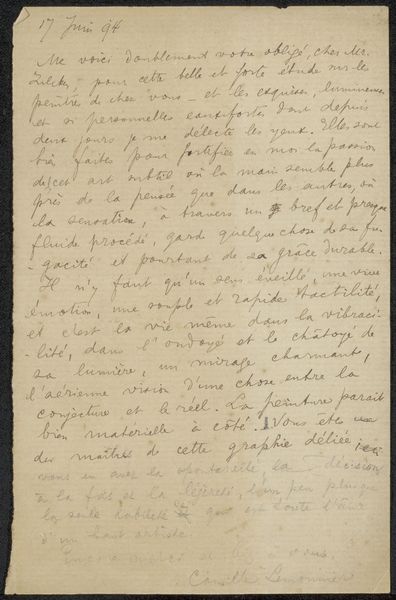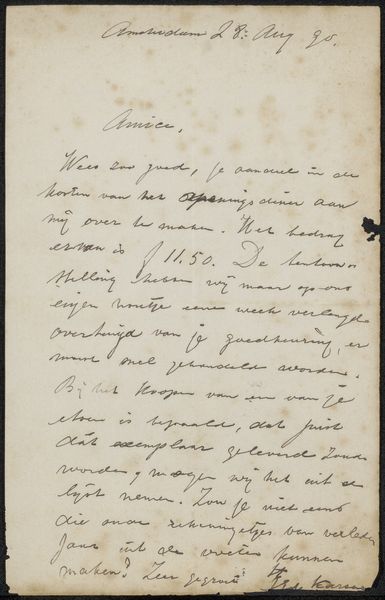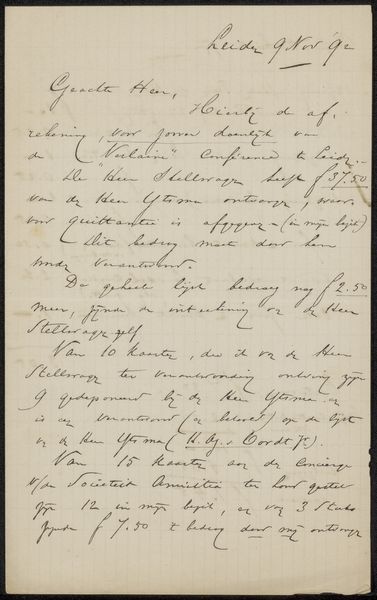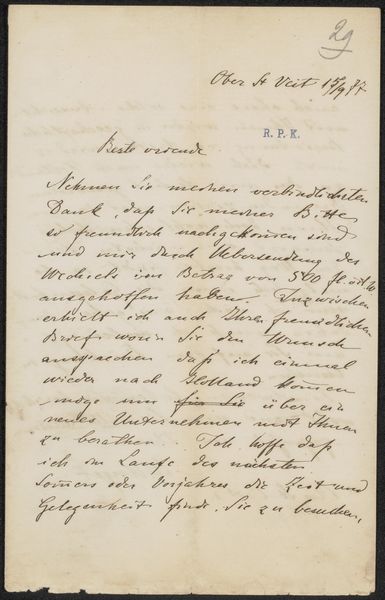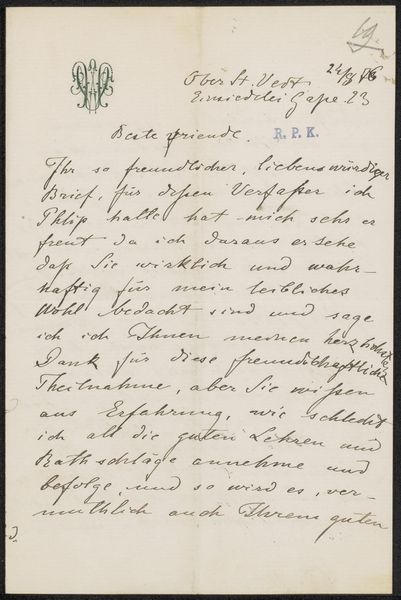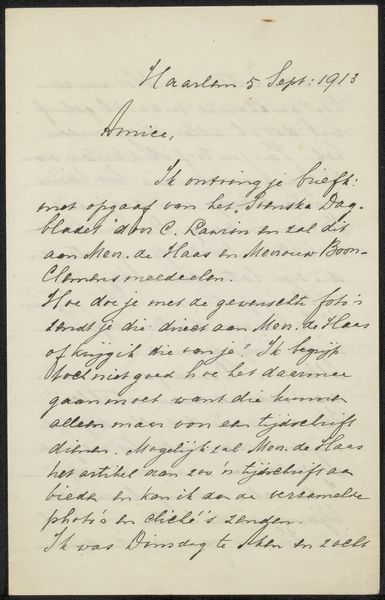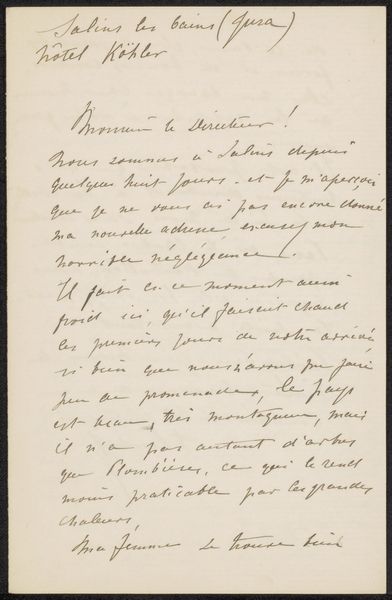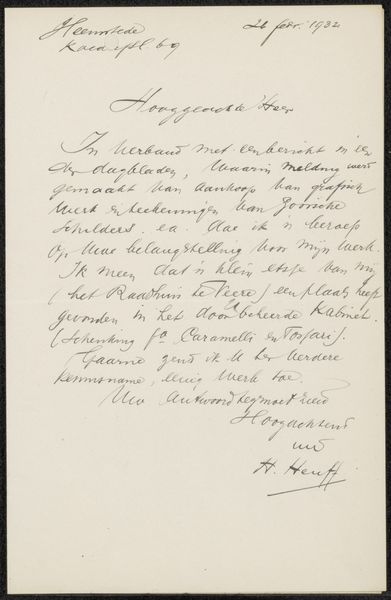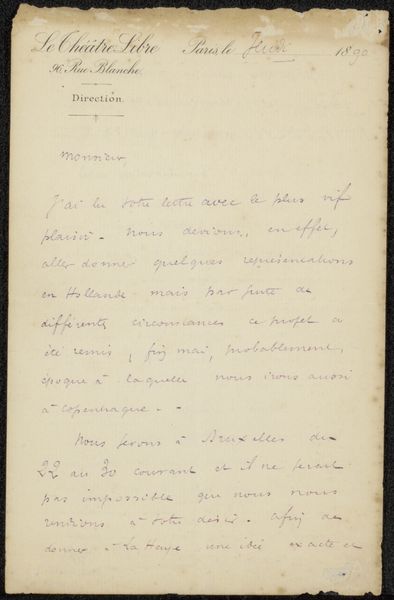
drawing, ink, pen
#
drawing
#
ink drawing
#
pen drawing
#
ink
#
intimism
#
pen-ink sketch
#
pen work
#
pen
#
calligraphy
Copyright: Rijks Museum: Open Domain
Editor: Here we have Albert Baertsoen’s “Brief aan Philip Zilcken,” created sometime between 1876 and 1922 using pen and ink. There’s something very personal and intimate about seeing someone’s handwriting, a glimpse into their thoughts. What do you see in this piece, looking beyond just the words? Curator: Beyond the literal meaning, the act of writing itself becomes a powerful symbol. Calligraphy, even in its most practical form like a letter, carries the weight of tradition, artistry, and human connection. Consider how different handwriting styles can evoke specific emotions or even project certain personalities. This letter, for instance, might convey a sense of urgency, care, or formality depending on the slant, pressure, and flow of the ink. Do you sense the impact that particular design choices might create on an observer, reader, or the recipient, versus typing the words? Editor: Yes, the script seems to show a blend of urgency and thoughtfulness. So, it's the *how* of writing, not just the *what* that carries significance. It shows humanity in this letter? Curator: Exactly! The imperfections, the flourishes, and the unique characteristics of the hand all contribute to its symbolic value. These marks point towards an intentional communication—even a performance, for it creates its own identity of the writer. What emotional residue remains after encountering this type of image? Editor: I think, seeing it in a museum now, there’s also a feeling of historical distance. It's a connection to the past. I can feel more closely connected to Albert. Curator: Indeed. It highlights cultural memory. Each curve of the letter and the choice of ink becomes a testament to that bridge between past and present. Editor: It makes you think about the lost art of letter-writing and personal connections that extend beyond words. Thanks.
Comments
No comments
Be the first to comment and join the conversation on the ultimate creative platform.


